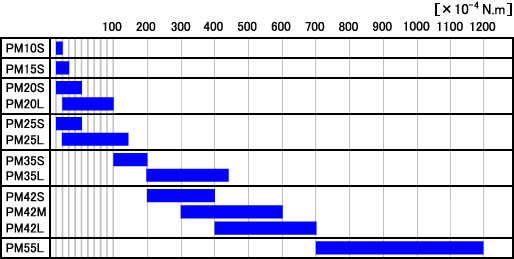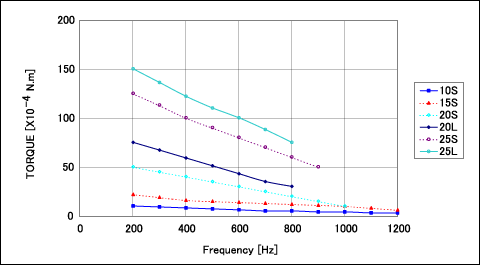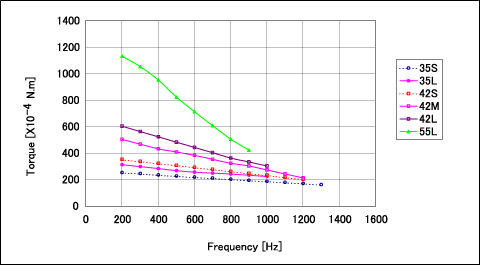Torque Requirements
Product Catalog
Selection in view of Torque Requirements (1)
The torque generated by a motor is determined by the size of the motor. Also, the heat resistance temperature of the magnet wires used in the motor limits the maximum torque for each motor size. UL and other safety standards impose further limitations. These specify that the motor surface should normally be at 105. In addition, when UEW (polyurethane wire: class E) is used the magnet wire heat resistance temperature is a maximum 120. We cannot guarantee reliability if the coil is used at temperatures exceeding this.
Torque Range According to Motor Size

The above graph shows output torque range by motor size. Within this range, coil resistance and magnet materials can be tailored for optimum motor settings. For Nd-Fe-B bonded magnets only, it is possible to control magnetization, and it is therefore possible to make adjustments to rotor flux.
Selection in view of Torque Requirements (2)
The output torque of a motor varies according to the drive speed. Even if the motor is driven at the same voltage, the rise in revolution speed leads to increased occurrence of electrical motive force, and to higher coil impedance. This in turn makes it harder for current to flow through the coil, thus lowering torque. The following graphs list the average torque for each size of motor. Please refer to this information in making your selection.
PM10S~PM25L

Magnets for sizes PM15 to PM25 mainly display MS70 characteristics.
PM35~PM55

Magnets for sizes PM35 to PM42 mainly display MS50 characteristics,
While magnets for size PM55 display MSPL characteristics.
Related page
Engineering Information for PM stepping motors
Technical Data
Precautions of Use
Explanation of Technical Terms
Contact Us
Please click the inquiry type below according to your question. Each product / sales representative will respond to you.